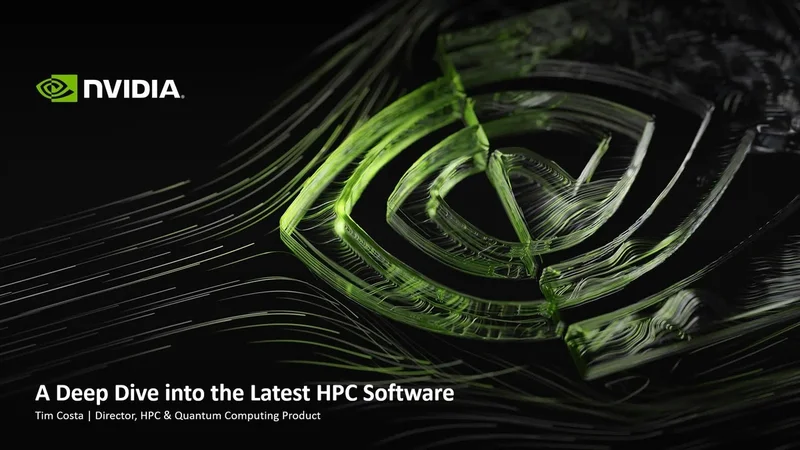Nvidia’s $5 Trillion Crown: A Monument to Innovation or a Bubble Inflated by Hype?
*
The number is $5 trillion. Let’s just let that sink in for a moment. It’s a figure so vast it borders on the abstract. On Wednesday, as Nvidia’s stock price flickered past $207.86, the Silicon Valley chipmaker’s market capitalization crossed that threshold, making it the first company in history to do so. The financial press, predictably, erupted in a chorus of superlatives.
But when a single company’s valuation eclipses the combined GDP of Japan, India, and the United Kingdom, celebration isn't the correct response. Analysis is. The question isn’t whether Nvidia is a revolutionary company—the data on that is irrefutable. The real question is whether its $5 trillion valuation is a rational reflection of its future, or if it's the glittering apex of a market-wide mania, a monument built more from speculative fervor than from solid ground.
The Anatomy of an Unprecedented Ascent
To understand the bull case, you only need to look at the velocity. Nvidia didn’t just reach this milestone; it rocketed past it. The company cleared a $4 trillion valuation just three months ago. That’s a trillion dollars of value created in a single quarter. For context, that's roughly the entire market cap of Visa and UnitedHealth combined, added in about 90 days.
The drivers are clear and, on the surface, incredibly compelling. Ravenous, insatiable demand for the company’s chips, which have become the undisputed picks and shovels of the AI gold rush. CEO Jensen Huang stands on stage and casually discloses $500 billion in new chip orders. It’s a staggering number, backed by a flurry of announcements that read like a futurist’s wish list: a partnership with Uber on robotaxis, a billion-dollar investment in Nokia to pioneer 6G, a deal with the Department of Energy to build seven new AI supercomputers, and a massive $100 billion investment in OpenAI to fuel the next generation of large language models.

Each of these partnerships represents a deep, structural integration of Nvidia’s hardware into the foundational industries of tomorrow. This isn't just about selling more graphics cards for gaming. It's about becoming the central nervous system for a new technological paradigm. The market sees this, and it’s pricing Nvidia not as a component supplier, but as the gatekeeper to the entire AI economy. This is the "monument to innovation" argument, and it's a powerful one.
This ascent is being supercharged by a broader market updraft. The S&P 500, Dow, and Nasdaq have all been hitting record highs, buoyed by the widespread belief that the Federal Reserve is poised to continue cutting interest rates (Stock market today: Dow, S&P 500, Nasdaq notch fresh records as Nvidia soars ahead of Fed rate decision). Money is cheap, and it’s desperately looking for growth. In this environment, a dominant player in the hottest sector on the planet acts like a financial black hole, pulling in capital from every direction. The AI industry, as Huang himself put it, has "turned a corner." But what if the corner leads to a cliff?
Locating the Fault Lines
And this is the part of the data that I find genuinely puzzling. The velocity of the stock’s appreciation seems to have a weak correlation with the underlying, albeit impressive, business fundamentals. It’s moving in lockstep with a narrative. And narratives can be treacherous.
Officials at the Bank of England and the IMF have already begun to sound the alarm, flagging the growing risk of an AI bubble. Their concern isn't that AI is vaporware; it's that asset prices have detached from any reasonable projection of future earnings and are now floating on pure sentiment. Nvidia’s rise isn't happening in a vacuum. It's the centerpiece of a market where the "Magnificent Seven" megacaps are responsible for the lion's share of the gains.
Think of the current market as a skyscraper being built at a record pace. Nvidia is the glorious penthouse suite, gleaming in the sun. The technology—the chips, the software, the innovation—is the steel frame, and it’s undeniably strong. But the foundation is the macroeconomic environment (specifically, an era of expansionary monetary policy). For the last decade, that foundation has been rock-solid. But what happens when the Fed’s priorities shift and the cost of capital is no longer near zero? What happens when the ground starts to shake? A structure built that quickly has hidden weaknesses.
Then there are the geopolitical variables. The fact sheet mentions Huang was discussing a potential new computer chip for China with the Trump administration. President Trump, in turn, is scheduled to speak with Xi Jinping about it. This isn't a footnote; it's a critical uncertainty. A company whose valuation is priced for global domination cannot afford to be locked out of, or severely restricted in, the world’s second-largest economy. How do you quantify that risk in a $5 trillion valuation? The honest answer is, you can't. It’s a known unknown, and markets have a nasty habit of ignoring those until it’s too late.
The Math Still Needs to Add Up
Ultimately, Nvidia is a phenomenal company. Denying its technological supremacy would be foolish. But a $5 trillion valuation isn't a reward for past achievements; it's a bet on a flawless future. It’s a price that assumes near-total market domination for decades, no significant competitive threats, a stable geopolitical landscape, and a macroeconomic environment that remains perpetually favorable. Not one of those assumptions is a given. The innovation is real, but the price tag feels like a product of hype. And in the long run, the math always, always, wins out over the hype.
